DKT Test (Traffic Lights and Lanes) #4
Is it permissible to cross the lines and overtake when the route is marked this way?
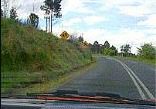
Explanation:
You are not permitted to cross the double unbroken dividing lines to overtake unless you are overtaking a cyclist.
These lights indicate that you are:

Explanation:
Because straight-through traffic has a red light, it must come to a halt. If it is safe to do so, traffic turning left can proceed.
As you approach a traffic light intersection, the yellow light turns red. You must do the following:
Explanation:
A red light must not be crossed.
You are driving a car with the number Y and wish to make a right turn utilizing a median turning lane. A car designated O is approaching you and is already in the median lane, slowing and signaling. Is it okay for you to enter the median turning lane and share it with others?
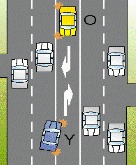
Explanation:
You are permitted to enter the median strip, but keep in mind that the other vehicle must be able to finish its maneuver.
When approaching traffic lights that change from green to yellow, what should you do?
Explanation:
You can continue through the lights if stopping is unsafe and you can make it past the intersection before the lights turn red.
Overtaking another vehicle necessitates a high level of concentration and decision-making. Which of the statements below is correct?
Explanation:
If you don't notice their indications, large, long vehicles may unexpectedly turn across your path.
At temporary traffic signals, where do you ground to a stop?
Explanation:
The sign designates a safe stopping area. Furthermore, some automated lights feature a sensor for vehicles waiting at a red light, allowing them to know when to turn the lights green again after a particular amount of time has passed. Stopping this sensor ahead may result in the light not changing to green.
Advertisement
You are in the A vehicle. You want to pass the car labeled B. You ought to:

Explanation:
Wait for vehicle B to finish its overtaking maneuver.
From a one-way street, you will turn right. When you begin your turn, where should you be?
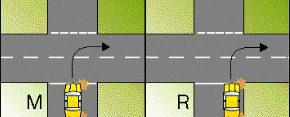
Explanation:
Other drivers can pass to your left if you park your automobile on the right.
Which of the following statements about driving on slick wet roads is correct?
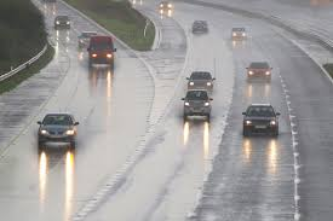
Explanation:
As there is less contact between your tyres and the road when driving on wet, slippery roads, the stopping distance may lengthen.
What should you remember if this is your first time driving at night?
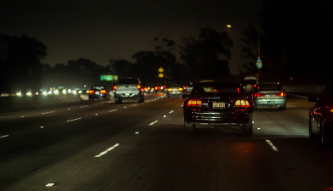
Explanation:
When you are more confident in your driving abilities, you might begin to drive in heavier traffic or on unfamiliar streets.
Is it ever permitted for someone whose license has been cancelled to drive?
Explanation:
If your license has been revoked or suspended, you are not permitted to drive.
What should you do last before moving away from the kerb?
Explanation:
Look over your shoulder for any vehicles that might be in your blind spot before stepping away from the kerb and into the road. To let other drivers know that you want to enter traffic, don't forget to signal with your indicators beforehand.
What should you do if you're approaching a curve on a road with shifting or unstable pavement?
Explanation:
Driving on uneven or shifting terrain results in significantly less grip. To keep the car under control, slow down.
Advertisement
In this case, are you allowed to make a right turn?
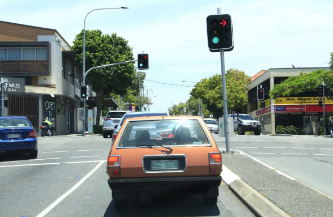
Explanation:
A red arrow prohibits turning in that direction. Hold off until the arrow turns green.
Do those with L plates have the freedom to operate a vehicle alone?
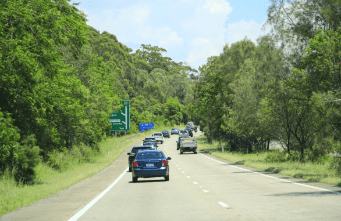
Which of the following speed cameras is in use in NSW?
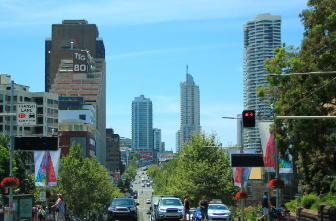
Explanation:
Red-light speed cameras track down speeders as well as those who run red lights.
Using point-to-point cameras, the average speed between two points is calculated.
In order to promote slower speeds, fixed position and mobile cameras are utilized in high-risk areas.
Which road are you currently driving on?
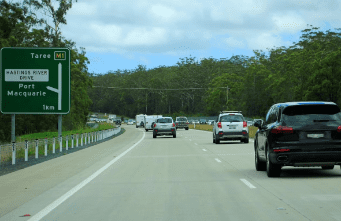
Explanation:
The route numbering system helps Australian drivers find their way across the country's highways.
What should you remember as you exit your car?
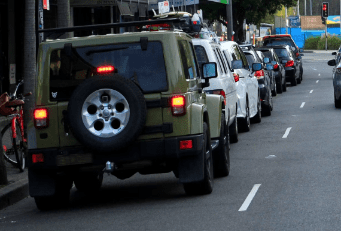
Explanation:
Before getting out of your car, check your mirrors and your blind area for oncoming vehicles. Given that they frequently ride close to the edge of the road, cyclists are particularly susceptible to open car doors.
Is the right-hand indicator need to be used when turning right?
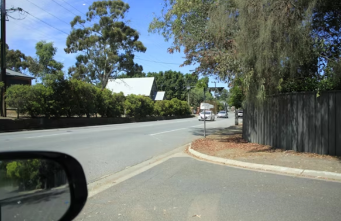
Explanation:
Your indicators must always be used whenever you make a turn.
In addition to turning, using your indicators is required while changing lanes, passing, going left or right from a stop, etc.